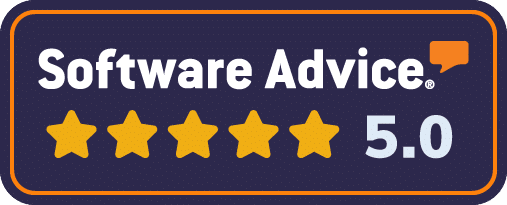The Pros and Cons of 360 Degree Assessments
In today’s fast-paced business environment, organizations constantly seek ways to enhance performance and develop leadership skills. One popular tool for achieving these objectives is the 360-degree assessment. But what exactly are these assessments, and how do they benefit or hinder an organization? In this article, we will explore the pros and cons of 360-degree assessments to help you decide if they are the right fit for your organization.
Understanding 360 Degree Assessments
A 360-degree assessment, also known as 360 feedback, is a comprehensive evaluation method that gathers feedback about an individual from multiple sources. These sources typically include supervisors, peers, subordinates, and sometimes, even clients or customers. By collecting diverse perspectives, 360 assessments aim to provide a well-rounded view of an employee’s performance and behavior.
The Pros of 360 Degree Assessments
Holistic Feedback
One of the significant advantages of 360-degree assessments is the holistic feedback they provide. Unlike traditional performance reviews, which often rely solely on a manager’s perspective, 360 assessments incorporate insights from various sources. This comprehensive feedback helps employees understand how their actions impact others across different levels of the organization.
Enhanced Self-Awareness
360-degree assessments can significantly enhance self-awareness among employees. By receiving feedback from multiple sources, individuals gain a deeper understanding of their strengths and areas for improvement. This awareness encourages personal and professional growth, fostering a culture of continuous development within the organization.
Improved Leadership Development
Leadership development is a critical component of any successful organization. 360 feedback can be instrumental in identifying potential leaders and nurturing their skills. By highlighting specific leadership qualities and areas for growth, these assessments guide individuals in their leadership journey, ensuring a pipeline of capable leaders for the future.
Strengthening Team Dynamics
360-degree assessments can also improve team dynamics by promoting open communication and trust. When team members provide feedback to one another, it encourages a culture of collaboration and mutual respect. This process can help identify and address any conflicts or misunderstandings, leading to a more cohesive and productive team.
Tailored Development Plans
Another advantage of 360 assessments is the ability to create tailored development plans. By analyzing the feedback received, organizations can design personalized training and development programs that address the unique needs of each employee. This targeted approach ensures that development efforts are focused and effective, ultimately benefiting both the individual and the organization.
The Cons of 360 Degree Assessments
Potential for Bias
Despite their many benefits, 360-degree assessments are not without their drawbacks. One common concern is the potential for bias in the feedback received. Personal relationships, office politics, or individual perceptions can influence the feedback provided, leading to skewed results. To mitigate this risk, it’s essential to create a culture of honest and constructive feedback within the organization.
Time-Consuming Process
Implementing a 360-degree assessment can be a time-consuming process. Gathering feedback from multiple sources, compiling the results, and analyzing the data requires a significant investment of time and resources. Organizations must weigh the benefits of the assessment against the time and effort required to ensure that it is a worthwhile endeavor.
Misinterpretation of Feedback
Another challenge associated with 360 assessments is the potential for misinterpretation of feedback. Employees may feel overwhelmed or defensive when receiving feedback from multiple sources, leading to confusion or miscommunication. To address this issue, it’s crucial to provide guidance and support throughout the process, helping individuals understand and apply the feedback constructively.
Limited Focus on Specific Skills
While 360-degree assessments offer a comprehensive view of an employee’s performance, they may not provide in-depth insights into specific skills or competencies. Organizations looking to develop particular abilities may need to supplement 360 assessments with other evaluation methods, such as skills assessments or competency-based interviews.
Risk of Negative Impact on Morale
Lastly, there is a risk that 360-degree assessments can negatively impact employee morale if not managed carefully. If feedback is perceived as overly critical or unfair, it can lead to resentment and disengagement. To minimize this risk, organizations should emphasize the importance of constructive feedback and ensure that the process is transparent and supportive.
Best Practices for Implementing 360 Degree Assessments
To maximize the benefits and minimize the drawbacks of 360-degree assessments, organizations should consider the following best practices:
Establish Clear Objectives
Before implementing a 360-degree assessment, it’s crucial to establish clear objectives. Determine what you hope to achieve through the process and communicate these goals to all participants. This clarity ensures that everyone is aligned and committed to the assessment’s success.
Provide Training and Support
To ensure that feedback is constructive and valuable, provide training and support to both those giving and receiving feedback. This training should focus on effective communication, active listening, and the importance of constructive criticism. By equipping employees with these skills, you can create a more positive and productive feedback process.
Maintain Confidentiality
Confidentiality is essential in encouraging honest and open feedback. Ensure that the feedback process is anonymous and that individual responses are not shared without consent. This anonymity fosters a culture of trust and encourages participants to provide candid feedback.
Follow-Up and Action Planning
After completing a 360-degree assessment, it’s essential to follow up with action planning. Work with employees to develop personalized development plans based on the feedback received. This follow-up ensures that the assessment leads to meaningful growth and improvement.
Monitor and Evaluate the Process
Finally, regularly monitor and evaluate the 360-degree assessment process to ensure its effectiveness. Solicit feedback from participants and make adjustments as needed to enhance the process and maximize its benefits.
Conclusion
360-degree assessments can be a powerful tool for enhancing self-awareness, leadership development, and team dynamics. However, they also come with potential challenges, such as bias and misinterpretation of feedback. By carefully considering the pros and cons and implementing best practices, organizations can harness the full potential of 360-degree assessments to drive growth and success.


